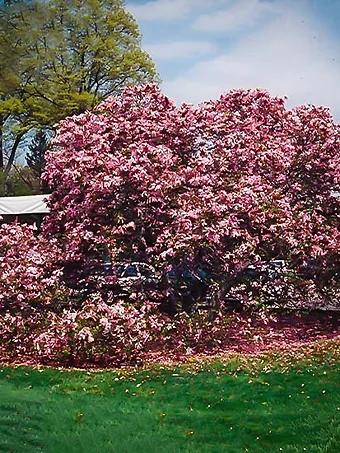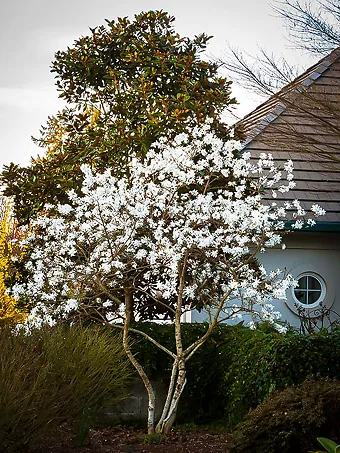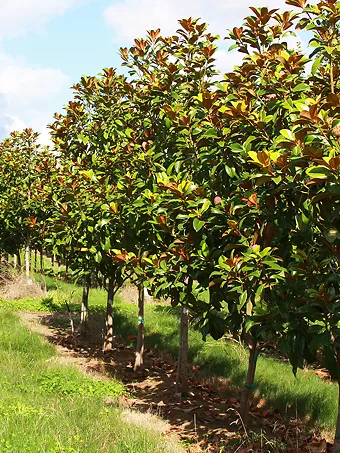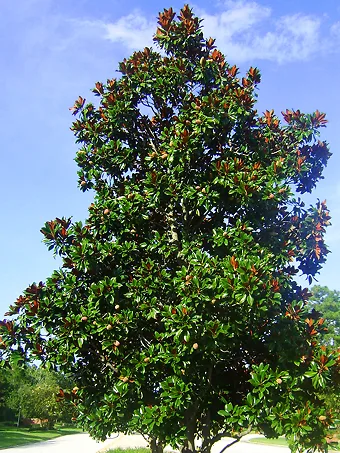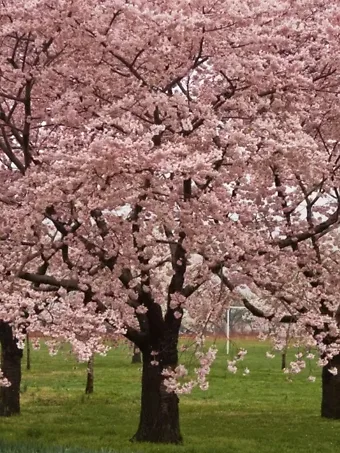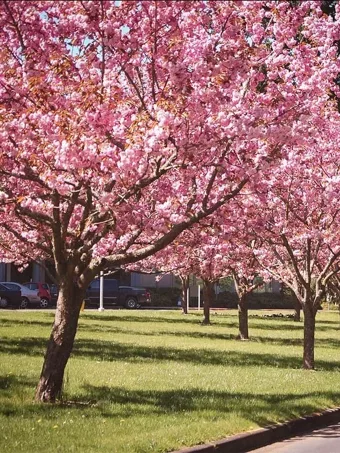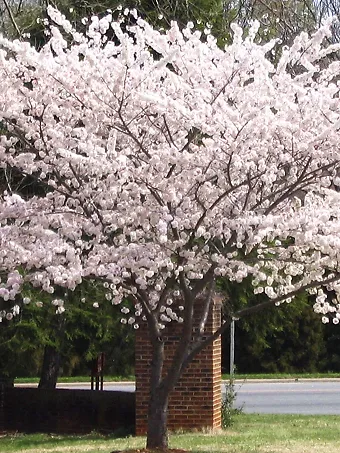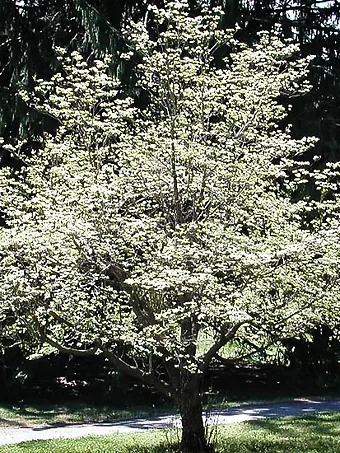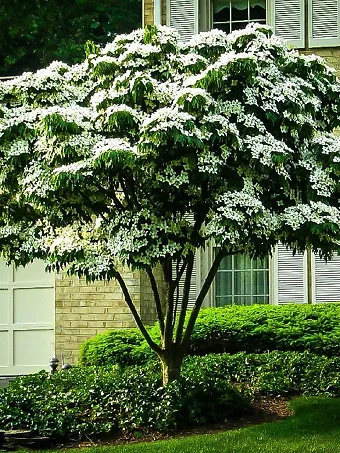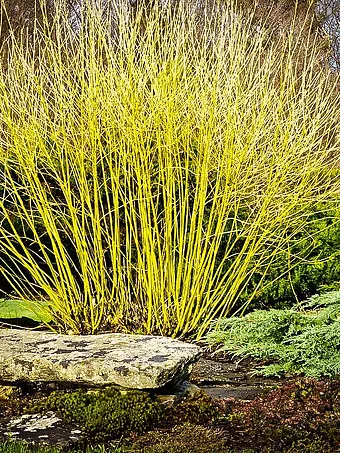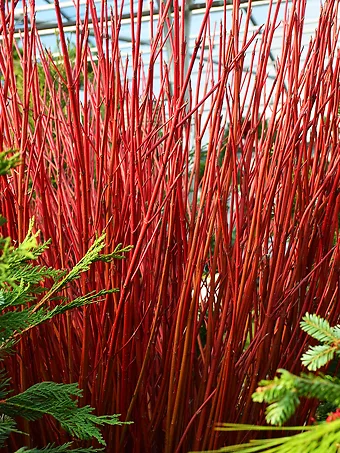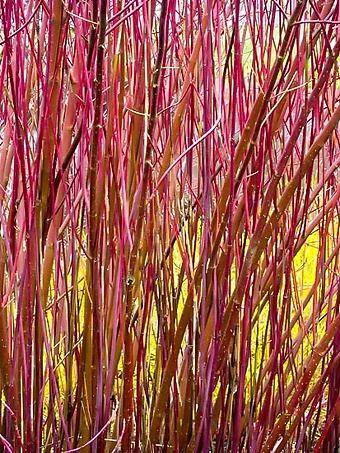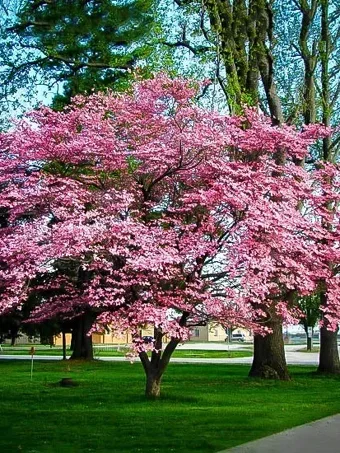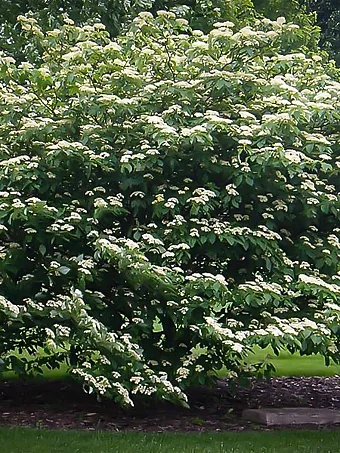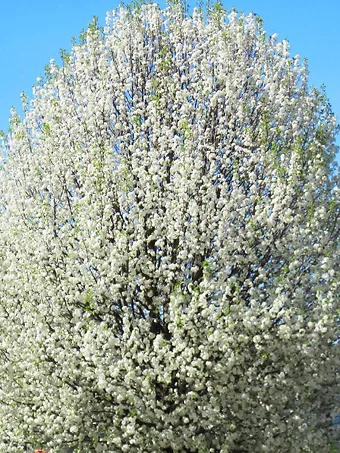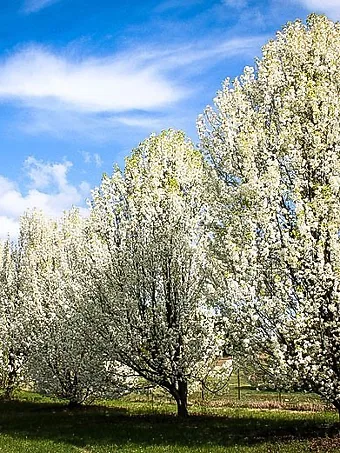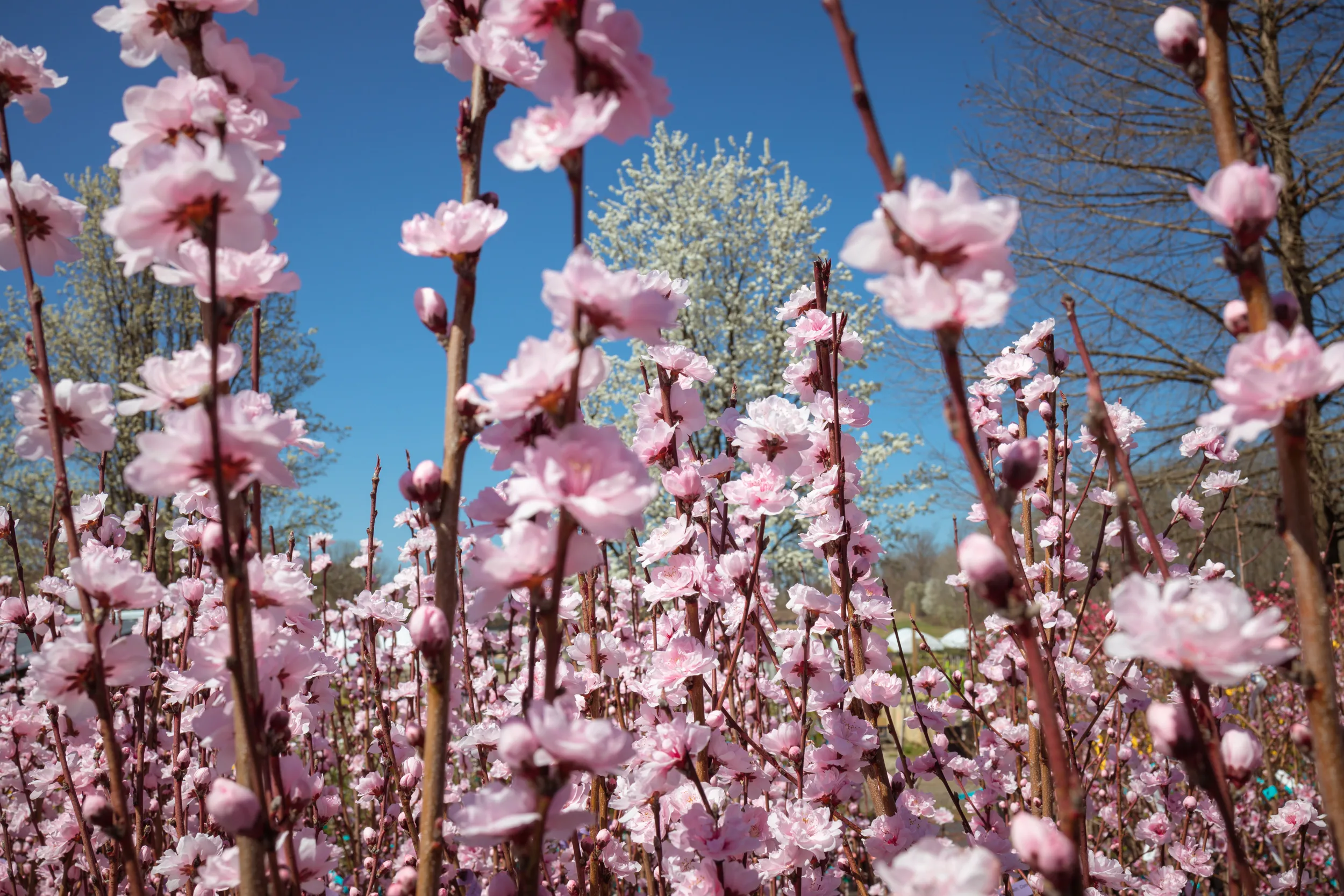
Written by s • Flowering Trees For Spring
For most gardens and gardeners, it is not Christmas but spring that “comes but once a year”. This season ends the long wait through winters of rain or snow, with bare trees sleeping through the season. With spring comes the promise of a new beginning, so what better way to greet it than with a spectacular display of flowering trees and what better time, as spring approaches, to consider how best to do that in our gardens.
Magnolia Trees
The season of spring flowering trees takes off with the Magnolias. Even in fall we can see the promise of things to come with the fat, hairy buds that show on the branches as the leaves fall from these trees. With the first hint of warmer weather and as the day lengthen, these buds open into large star-shaped or vase-shaped flowers in white, pink or purple, carried in profusion on the bare branches.
For gardeners in the coldest areas, the Royal Star Magnolia Tree is the ideal choice. Hardy to zone 4, this small tree is smothered each spring in widely-spread white flowers for several weeks, bringing a beautiful lift to your garden. It thrives in semi-shaded locations and grows steadily into a dome-shaped tree that can reach 20 feet in height. For more color both the Jane Magnolia Tree and the Betty Magnolia Tree have been specially bred to be just as hardy, but smothered in rich pink flowers that carry a real punch, so they are even more spectacular. Gardeners in colder areas can now enjoy pink Magnolia Trees that used to be only available in warmer zones.
Redbud Trees
Just as stunning as the Magnolia trees are the two native American trees known as Redbuds. These small, often multi-stemmed trees can be grown right across the country, with the Eastern Redbud thriving in areas with good rainfall. The Western Redbud is more drought-tolerant and suitable for drier states and does especially well in California, Utah and Arizona as well as anywhere you have sandy, well-drained soil. Redbud trees are garlanded with rich pink-purple flowers long before the other trees in your garden even begin to bud out. They are fast-growing and trouble-free and really make a statement in any garden.
Flowering Cherry Trees
Everyone knows the flowering cherries, and at the Tree Center we stock a wide range of colors and forms to suit every garden situation. Many of these were introduced into American from their home in Japan in the early twentieth century and have become so well established and loved that the Washington D.C. Cherry Blossom Festival is a huge event. Both the Yoshino Cherry and the Kwanzan Cherry can be traced back to their Japan origins.
Other varieties have weeping branches, like the Pink Weeping Cherry or the White Weeping Cherry, and they are drop-dead beautiful every spring when their clusters of flowers hang from the branches and sparkle in the spring sunshine. Weeping forms look especially elegant near water or on sloping ground.
As garden trees the flowering cherries and their relatives the Flowering Plums are particularly valuable if you garden on alkaline soil, since unlike some plants that will only thrive easily on acid soil, these beauties will be happy even on chalky and limestone soils that will deter many other trees.
Flowering Cherry Trees are usually associated with cooler parts of the country, but there is one, the Okame Cherry Blossom Tree, that will grow in the warmest areas because it does not need a significant period of cold weather to develop its flower buds. Even if you never experience frost this tree – which is also very disease and pest resistant – will every spring turn into a pink cloud floating in your garden. From zone 6 to zone 10, this tree deserves to be more widely grown and appreciated.
Dogwood Trees
Of course not all our beautiful spring-flowering trees have come from other countries and among the most spectacular native trees are the flowering dogwoods. These woodland trees are found in different forms across the country and give us one of the most beautiful and elegant spectacles of spring.
In cooler regions the ideal choice is the Pagoda Dogwood, which grows throughout the north-east and is hardy throughout zone 4. As the name suggests, this small tree has wide, graceful branches that grow almost horizontally into layers, each one covered in late spring with white flowers. In flower this tree seems dusted with fairy-snow and makes a stunning show in any partially-shaded part of your garden.
If you live in the slightly warmer areas of zone 5 or more you can welcome into your garden the even more spectacular Pink Dogwood and its white version, the Cloud 9 Dogwood. Both of these are forms of the native Cornus florida, which grows from Maine to Texas. Again, this tree prefers a slightly shady, damper spot in your garden and it will reward you with a stunning show of pink or white flowers each spring. Actually the flowers are highly-modified leaves and if you examine your tree closely you will see the small ‘real’ flowers in the centre of the large pink of white bracts that make this tree so beautiful.
If your taste runs to the more exotic, then the White Kousa Dogwood is a Chinese and Japanese cousin of our native flowering dogwood, which thrives in similar conditions and also has large flowers. Its great advantage is that it is more drought-tolerant than our native tree, so if you garden tends to become dry in summer then choose the White Kousa Dogwood.
Flowering Pear Trees
If you are a fan of low-maintenance gardening you don’t need to look any further than the Flowering Pear Trees for a spring-flowering tree to herald the new season in your garden. These tough trees will grow in harsh urban conditions and they are hardy all the way through zone 5 to zone 8. When it comes to soil, nothing bothers this tree and they are especially tolerant of heavy clay that will deter many other trees. They even grow naturally in a neat, tear-drop shape that never needs trimming but always looks smart and controlled.
The narrow form of the Cleveland Flowering Pear Tree, which is only 15 feet wide when at its fully grown 30 to 40 feet tall, makes it ideal to fit into a smaller garden or a smaller space. Every spring the new foliage is hidden by masses of white flowers that make a spring beacon of this tough tree. If you have room for a wider tree then the Aristocrat Pear Tree is very similar but matures at about twice the width, making it an ideal avenue or screening tree, since you need to plant fewer to create a complete screen.
Landscaping with Spring Flowering Trees
With such a wide range to choose from there are lots of opportunities to add these trees to your existing garden, or use them to create a new one. Location is important since you want to be able to see your tree in flower. Often in spring it is still a little cool to be using the garden, so plant them where they can be seen from your living room or kitchen windows or plant in the front yard where they will greet you every time you come and go. Since after flowering they will be green for the summer, plant summer flowering trees like Crape Myrtle Trees nearby, to continue the color display all summer and well into the fall. Many, like the Flowering Pear Trees or the Flowering Cherry Trees make beautiful avenues along a driveway or the boundaries of your property and provide good summer screening too.
When planting your spring-flowering trees remember to choose a suitable location for their particular needs and take a little extra care the first year or two while they become established. It’s especially important to keep them well-watered during those early months so that they establish well and grow quickly to give you their full beauty.
Here at the Tree Center we make sure all our trees are the correct variety and we ship only healthy specimens that you can be sure will be right at home in your garden and bring you years of spring-time pleasure.
